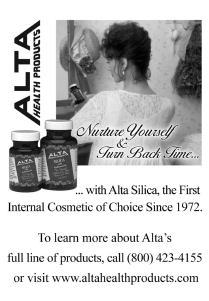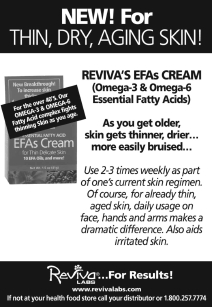Life is an evolution, as we move throughout the stages of development and aging. From puberty, females tend to have more complicated life stages than men, physiologically speaking.
When it comes to their health, women are dually concerned about their reproductive systems as well as other health issues shared by men. Trisha Sugarek, B.S., M.S., national educator and R&D specialist for Bluebonnet nutrition Corp., Sugar Land, Tx, believes that the three main health concerns for women today are: heart health (heart disease), breast cancer and obesityrelated type-2 diabetes. Many other health-related challenges are also currently affecting women such as PMS/menopause, prenatal/fertility health, osteoporosis/arthritis, kidney/bladder health and anxiety/sleep disorders.
 “However,” Sugarek emphasizes, “the better question is— why do heart, breast and obesity/diabetes health stand out from all of these other health concerns? Women are vulnerable to these health concerns because 1) they live longer, 2) they have hormonal fluctuations throughout their life spans that affect these conditions and 3) chromosomal pairing (e.g., xx, xY) modulates the susceptibility of certain diseases/conditions.”
“However,” Sugarek emphasizes, “the better question is— why do heart, breast and obesity/diabetes health stand out from all of these other health concerns? Women are vulnerable to these health concerns because 1) they live longer, 2) they have hormonal fluctuations throughout their life spans that affect these conditions and 3) chromosomal pairing (e.g., xx, xY) modulates the susceptibility of certain diseases/conditions.”
There’s good news, Sugarek is quick to point out. All of these conditions can be favorably influenced by nutrition and lifestyle modifications. For example, diets rich in calcium, magnesium and vitamin D3 provide the essential elements needed to help maintain bone integrity and should be taken throughout the lifecycle. Furthermore, diets rich in fruits and vegetables, whole grains and omega-3 fatty acids for heart health protect against heart disease. “Combining this knowledge concerning sexbased medicine and nutrition is critical for primary prevention of these conditions,” she states.
Beyond condition-specific concerns, several factors are at play that influence how women deal with those concerns; retailers who understand the current overall mindset will thus be more effective in creating or re-creating their women’s health department and marketing to the women in their communities.
As Angelica vrablic, Ph.D., nutrition research manager at American Health, Ronkonkoma, nY, sees it, one significant factor affecting health choices for women is the notion of prevention versus treatment. More than ever, it has become more medically apparent that some of the most serious challenges American women face stem from nutrient deficiencies. As one example, vrablic points out, it is known now that vitamin D deficiency is an epidemic in the United States and that we are just not making enough from exposure to sunlight.
Historical perspective for enlightened contrast is offered by Grace Ormstein, M.D., CTn, Ph.D., scientific herbal advisor to Himalaya Herbal Healthcare USA, Houston, Tx, who asserts that today’s woman has a very different life than the woman who lived 60 to 100 years ago. Generally, our levels of stress alone are much higher and more sustained than that of women in decades past. “Frankly, it’s more than the female body is programmed to cope with and that can cause potentially longlasting consequences,” she states.
Stress is experienced as both environmental and internal. The modern woman, Ormstein observes, deals with more emotional stress than ever before: juggling commitments between work and home, making a living notably in a challenging economy, motherhood commitments, trying to get into shape. In addition, women today are exposed to more environmental toxins than any of their counterparts in history such as household chemicals, gas and exhaust fumes, a polluted outdoors, BPA, pesticides in foods, potential “sick buildings” in the work environment— all contributing to the body’s total toxic burden and relatedly, increasing physiological stress.
The consequences are intensified because “Women’s bodies have gotten bigger in the past several years too. One of the underlying consequences of stress and toxins is how they interfere with normal cortisol, insulin and leptin levels. Because our fat tissue loves to accumulate toxic molecules, the size of women’s bodies grows bigger as our overburdened livers lose their ability to help detoxify,” Ormstein states.
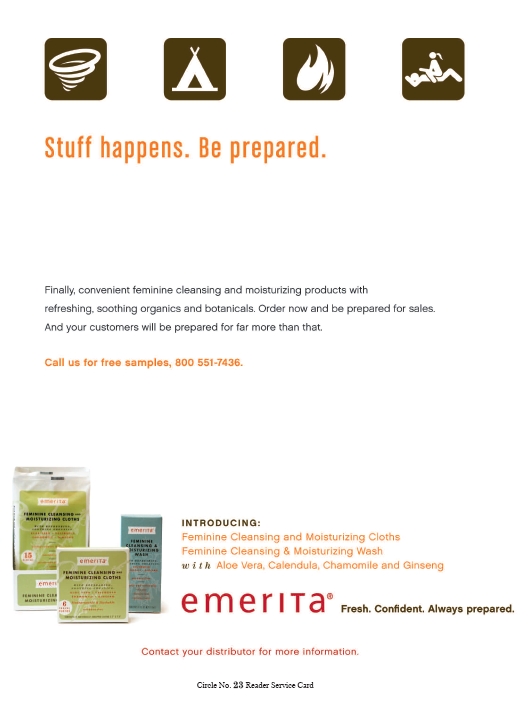 Further, accumulated stress impacts effective digestion, which impedes nutrient absorption and increases the risk of nutrient deficiency. The stress also imposes challenges to the cardiovascular system, reproductive system and metabolism. Blood sugar levels become affected. The bones are robbed of nutrients and “brain fog” is common.
Further, accumulated stress impacts effective digestion, which impedes nutrient absorption and increases the risk of nutrient deficiency. The stress also imposes challenges to the cardiovascular system, reproductive system and metabolism. Blood sugar levels become affected. The bones are robbed of nutrients and “brain fog” is common.
Women and Inflammation
Another internal factor that can greatly impact women’s health is inflammation; more research has shed light upon the consequences of this physiological response that, when normal, is a beneficial reaction. Amos Grunebaum, M.D., medical advisor for Bellingham, WA-based Fairhaven Health, and an expert in the field of obstetrics and gynecology, says there is a link between inflammation and fertility in women. “Inflammation is a hot topic for today’s women. Research has shown that inflammation is a major cause of complications including infertility. In addition, with more powerful antibiotics come more resistant organisms which are harder to treat and have an adverse effect on women’s bodies and their fertility,” he says.
Neil E. Levin, CCn, DAnLA, nutrition education manager for nOW Foods, Bloomingdale, IL, further explains the link between women and inflammation. He states, “Women do seem to suffer more from certain problems related to inflammatory challenges and hormonal changes. Because of their regular, or sometimes irregular, hormonal cycles, there are both advantages and disadvantages compared with men; at least until menopause tends to even the field regarding heart disease, for example.” Menstruation lowers a woman’s iron levels, which may also reduce health problems caused by free radical damage. States Levin, “Because of this, premenopausal women tend to have lower levels of heart disease than either postmenopausal women or adult men. Also, because of their greater reliance on three major forms of natural estrogen as a dominant hormone complex, women seem to have greater risks of developing hormonal abnormalities and elevated cancer rates related to breast, endometrial tissues and so forth.”
 Herb joiner-Bey, N.D., educator, author and advisor to Barlean’s, Ferndale, WA, explains this connection even further. Fat tissue produces estrogen. But, he states, “nutrients that can slow down fat tissue’s estrogen production are needed to minimize the complex adverse health effects of obesity. Lignans in flaxseed inhibit the enzymes estrogen synthase (aromatase), which has a major role to play in the production of excess estrogens.”
Herb joiner-Bey, N.D., educator, author and advisor to Barlean’s, Ferndale, WA, explains this connection even further. Fat tissue produces estrogen. But, he states, “nutrients that can slow down fat tissue’s estrogen production are needed to minimize the complex adverse health effects of obesity. Lignans in flaxseed inhibit the enzymes estrogen synthase (aromatase), which has a major role to play in the production of excess estrogens.”
For Kevin j. Ruff, Ph.D., MBA, director of scientific and regulatory affairs at Membrell, Carthage, MO, the jury is still out in the debate over whether women are more prone to developing inflammatory conditions than men, however it is clear that there are differences between the sexes regarding inflammatory and pain responses. Research has shown that women experience a higher level of pain than men from a particular stimulus and also have a reduced response to pain medications compared to men. Some findings have revealed that men and women may have differing mechanisms of action of the cyclooxygenase enzymes (COx-1 and COx-2) (1).
“These gender differences are exceptionally apparent in fibromyalgia, as women are about nine times more likely to develop the disease than men,” he says, adding that why this difference exists remains unclear. Some evidence suggests that male hormones (androgens) may exert a protective effect in the development of fibromyalgia (2).
“The key to understanding gender differences in any disease is to first recognize that a difference exists and then include this factor in the design of future studies. This is rapidly becoming the norm for disease investigation,” Ruff asserts. This is likewise a great approach for dietary supplement retailers to follow.
Kaitlyn Hastings, public relations specialist at Reserveage, Gainesville, FL, has some good news regarding supplements for women concerned about inflammation. According to Hastings, “new research has been released showing for the first time the suppressive effects of resveratrol on inflammation and oxidative stress in humans. Both of these often cause cardiovascular diseases, insulin resistance, autoimmune diseases and Alzheimer’s disease” (3).
Frank Schönlau, Ph.D., director of scientific communications at Horphag Research, London, U.K., also offers some positive data: a large double-blind, placebo-controlled study with 216 menopausal women showed that hormonal treatment (oral estrogen) significantly lowered pro-inflammatory markers as well as homocysteine levels compared to placebo (4). “The effects of women’s hormonal balance on proinflammatory situations are still in the early stages and currently extensively researched. nutritional intervention may provide anti-inflammatory activity without interference with a woman’s hormonal balance,” he commented.
He adds pointedly that menstruation “represents a wound and consequently inflammatory processes, which cause pain. Women taking anti-inflammatory supplements may deal with menstruation in a much better way.” A branded French maritime pine bark extract (Pycnogenol) was researched in more than 200 women suffering pain during their periods. Women taking the supplement experienced far less menstrual pain and need much less pain medication as compared to a group of placebo-treated women (5), according to Schönlau. This study confirmed earlier findings showing that the antioxidant gradually lowers menstruation pain when taken as daily supplement over longer periods of time. “The pain sensation is a result of inflammatory COx-2 generated as part of the natural inflammatory response of the menstruation. Pycnogenol was shown to inhibit generation of COx-2 in humans, which explains why supplementation with Pycnogenol should start before the period,” he emphasized. “The clinical studies showed that menstrual period pain was lower with every following period when Pycnogenol was taken throughout.”
Pre-menstrual syndrome (PMS) is a collection of symptoms that arise before the start of menstruation. Symptoms can include several of the following: breast tenderness, headache, irritability, mood swings, water retention, uterine cramping, lower back pain, fatigue and brain fog. These symptoms are the result of high levels of estrogen and progesterone. For most women, they are simply annoying; but for others, the intensity can derail them for a couple of days each month; more acute cases are now known as PMDD—pre-menstrual dysphor ic disorder. According to www.pmdd.factsforhealth.org, PMS affects as many as 75% of menstruating women while this “very severe form of PMS” affects about 5% of women. (This organization, found near the top of a Google search for “PMDD,” takes a very conservative approach towards the value of efficacy of supplements including evening primrose oil. This wide visibility may cause doubt about supplements overall among your potential customers.)
Sugarek points out that although physicians often prescribe drugs such as selective serotonin reuptake inhibitors (SSRIs), anxiolytics and hormones such as gonadotropin-releasing hormone and birth control pills, there is a cache of supplements that may provide beneficial action against some of the symptoms: vitamin B6, calcium, St. John’s wort, valerian root, pharmaceutical-grade L-tryptophan, L-theanine, calcium– magnesium–vitamin D3 combo, dong quai, chasteberry and evening primrose oil.
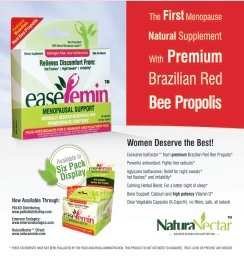 Levin adds that changing the diet can help significantly, as “women who eat enough legumes, flax seeds and other sources of plant estrogens (phytoestrogens) tend to have more manageable menstrual cycles. Certain signs, like menstrual- related migraine headaches, indicate a deficiency of natural progesterone levels that can be helped either with ingesting chasteberry if premenopausal or by applying natural progesterone cream to the skin. Certain herbal formulas and isoflavones from foods are utilized to preserve healthy and more comfortable menstrual cycles.”
Levin adds that changing the diet can help significantly, as “women who eat enough legumes, flax seeds and other sources of plant estrogens (phytoestrogens) tend to have more manageable menstrual cycles. Certain signs, like menstrual- related migraine headaches, indicate a deficiency of natural progesterone levels that can be helped either with ingesting chasteberry if premenopausal or by applying natural progesterone cream to the skin. Certain herbal formulas and isoflavones from foods are utilized to preserve healthy and more comfortable menstrual cycles.”
Melinda Bonk, founder of Wise Essentials, St. Paul, MN, observes that “Women need to have balanced hormones. When your hormones are balanced, the symptoms will not appear. Most women think that PMS is normal since so many women have it. It is not normal and they do not need to live with it.”
Menstruation is just part of the cycle of life. It is the uterus getting ready to slough off the protective lining it builds every month to encourage implantation of a zygote—the very first “home” of children. Many women in their 30s and even 40s are highly desirous of bearing children, and as their premier source of products and information for a lifestyle of natural balance and health, your store can be of welcoming assistance. Ormstein suggests that women who want to embark on a healthy pregnancy should do a thorough, biannual body cleanse before becoming pregnant. Such a program should target cleansing the liver, colon, kidneys, blood and the lymphatic system, upon approval from her doctor.
If a woman absolutely wants a baby in her future, taking a prenatal multi is a healthful action. “It may seem strange to start the taking a prenatal multiple even when you are not pregnant, but the thing is, once you are pregnant, baby is developing at an exponential rate. Plus, it’s not just any type of nutrients; it’s the right nutrients in the right amounts as well as in the right balance—especially vitamins, minerals and essential fatty acids. Deficiency or excess of any number of these nutrients can lead to complications during pregnancy for the mother and the developing child,” Sugarek explains.
Grunebaum encourages folic acid 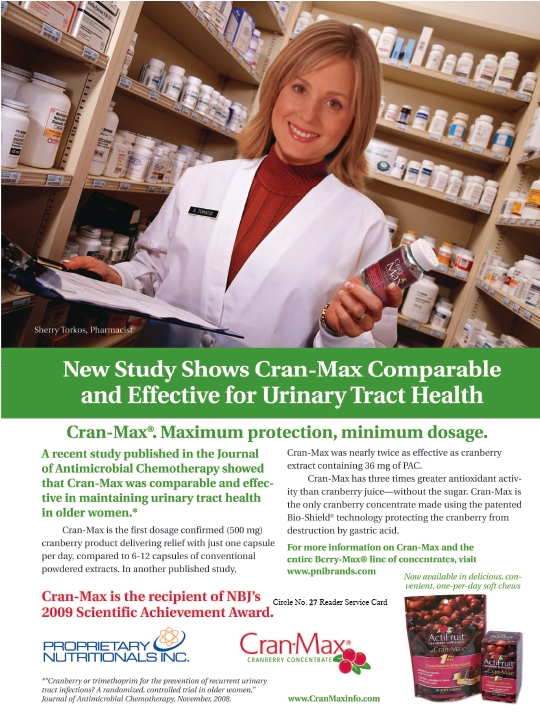 supplementation during childbearing years: “Taking folic acid and a prenatal vitamin supplement not only decreases risks of fetal malformations, but it can also improve your fertility. The best time to start a preconception supplement including folic acid is two to three months before getting pregnant.”
supplementation during childbearing years: “Taking folic acid and a prenatal vitamin supplement not only decreases risks of fetal malformations, but it can also improve your fertility. The best time to start a preconception supplement including folic acid is two to three months before getting pregnant.”
Further, the U.S. daily values (DVs) for some nutrients double during pregnancy; therefore, supplementation may be the only way to guarantee that mom’s nutrient needs are met. Specifically, pregnant and nursing mothers need increased quantities of iron and several Bvitamins, like thiamin, riboflavin, folic acid and B12. Supplementing with DHA is also recommended for healthy fetal eye and brain development.
Menopause
Eventually, the female reproductive system decides it’s time to retire and goes through a process of shutting down, a per iod known as per i - menopause that can last several years. After one full year of lack of menses, she is considered finished fully with the reproductive stage. Depending on the individual woman’s viewpoint, this can be a blessing, a non-issue (as long as she’s healthy), or a significant tragedy because she isn’t “young” anymore.
|
Tips on Handling Menopause As retailers, you may be known for the brands and products that are not carried in the mainstream—but you are also known as the reliable source for quality lifestyle enhancement. This means not just product education, but tips to improve quality of life, overall and every single day. Jose Luiz “J.L.” Paes-Leme, founder and CEO of Sunrise, FL-based NaturaNectar LLC, offers some information that you can use to make a handout for women purchasing menopause-support products. He suggests the following Five-Point Plan for a Healthy Menopause. Paes-Leme’s plan can be the inspiration for your own bag stuffers or newsletters articles. (Just please be sure to credit him appropriately). |
Anh Thu V. Tran, M.S., M.D., nutrition consultant for Cyvex nutrition, Irvine, CA, encourages the positive approach— which itself can have a dramatic impact on lessening symptoms. “As a woman, the transition into the mature years could be the best years of her life. varying from a few months to five years, the course from peri-menopause to complete menopause is the major physiological change in these years. In addition to the night sweats, sleep disturbance and mood swings, menopause has direct implications on the cardiovascular, musculoskeletal and central nervous system. External stress interconnected with genetic disposition and poor lifestyle choices increase susceptibility of conditions such as, but not limited to, depression, diabetes mellitus type II, hypertension, osteoporosis, osteoarthritis, cardiovascular disease, cerebral vascular disease and age-related cognitive decline.”
Overall, numerous ingredients and products can be helpful, notably when the woman spent her early years indulging in less-than-stellar diet habits. Tran says that many whole extracts and pure compounds work actively as antioxidants, anti-inflammatories, neurotransmitter modulators and hemodynamic agents to respond to age-related degenerative mechanisms. A few include resveratrol, which has neuroprotective and cardiovascular effects; vinpocetine, which has demonstrated all of the above, but with further suggested effects toward cerebral vascular health and enhancement in blood flow in enhancing memory. “Fisetin, extracted from the smoke tree, also has demonstrated such activity in enhancing memory, but its combined action involves preservation and regeneration of interconnections of neurons. The continual science is abundant and brings potential promise to alternatives in the quest to healthy aging of which menopause is a paramount part,” she states.
 Ormstein, Levin and Sugarek all stress the importance of supplementation in the 30s to be best prepared for post-menopausal age-related conditions such as osteoporosis, heart disease and diabetes type II. Maintaining bone mass and an ideal weight as well as healthy stress management wi l l create a stronger, healthier future of aging.
Ormstein, Levin and Sugarek all stress the importance of supplementation in the 30s to be best prepared for post-menopausal age-related conditions such as osteoporosis, heart disease and diabetes type II. Maintaining bone mass and an ideal weight as well as healthy stress management wi l l create a stronger, healthier future of aging.
Additionally, according to Schönlau, a large study of 200 peri-menopausal women showed dramatic improvement in typical climacteric symptoms when they took Pycnogenol for six months (6). “Women experienced significant improvement in difficulty falling asleep, irritability, anxiety, feeling of bloatedness, memory problems, headaches and most importantly hot flashes, as compared to a parallel group given placebo,” he says.
For menopausal women who are having trouble with focus, joiner-Bey believes flax can help. He states, “The higher the lignan levels in the serum of postmenopausal women, the better they perform on mental challenge tests.”
Phytoestrogen Debate
World-renowned expert Richard A. Passwater, Ph.D., vice president of research and development at Solgar vitamin and Herb, Leonia, nj, explains, “When women reach menopause, their bodies produce less estrogen. This can cause an array of uncomfortable symptoms as their systems adapt to the changing levels of hormones. Certain plant constituents, called phytoestrogens, weakly imitate human estrogen to restore hormonal balance. However, some phytoestrogens are more powerful than others.”
A newer phytoestrogen— miroestrol—is found in Thai kudzu (Pueraria mirifica) extract, and Passwater states that it is to date “the most active phytoestrogen yet discovered. Modern research has discovered that this particular species of Thai Kudzu contains a complex of phytoestrogens, including miroestrol, which makes it ideal for relieving symptoms of menopause. Unlike phytoestrogens genistein and daidzein, miroestrol is biosimilar to human estrogen— making it many times more powerful (7, 8). Initial human studies have found miroestrol-containing Thai kudzu effectively relieves common menopausal symptoms, including hot flashes, night sweats, headaches, mood instability, nervousness and fatigue” (9, 10).
Although soy and red clover remain viable options for women who want to lessen intensity of annoying menopausal symptoms, there also remains a fence-dividing debate as to what’s safer and works, “pharmaceuticals OR dietary supplements?” Proponents of pharmaceuticals endured quite the wallop when Premarin was found to be disastrous for women’s health in the long term. More recently, a nebulous phrase called “bio-identical hormones,” that basically refers to mostly pharmaceutically compounded hormones to ease effects of aging.
“We have little information on bioidentical hormones other than they are quite expensive,” asserts Michael G. jeffers, president of Helios Corp., Santa Fe, nM. “The key question is if bio-identical hormones are free of the risks that were found in the nIH study with HRTs, which are no longer recommended as safe al ternat ives in managing menopausal symptoms and now many doctors recommend natural alternatives. Yet also more recently are two main natural solutions, black cohosh and isoflavone, which have come under scrutiny for their potential health risks as well as questions about their efficacy.”
A combination of three herbs, Phlomis umbrosa, Cynanchum wilfordii and Korean angelica, has proven efficacious, jeffers notes. Two doubleblind studies showed this combination, EstroG-100 from Helios, to be safe and effective (11, 12).
Levin also sees more experts warning against eating soy with the suggestion that plant estrogens are dangerous. He has investigated the scientific literature to determine the risk and found that the scientific consensus is that there is no risk for healthy women, and even no indication that soy foods are unsafe for women who have had breast cancer. Soy prevents oxidation and the conversion of estrogen into its more dangerous forms, aids in liver metabolism of these hormones and various toxins, and has been “proven” to protect against heart disease (an FDA-approved qualified health claim).
 He adds that many women will ask about soy’s ability to protect against cancer. Although we know that products and their manufacturers cannot claim that soy protects against some forms of cancer, these benefits have been shown in clinical trials. For example, Levin cites, in pooled risk estimates of three meta-analyses published in a peer-reviewed nutrition journal, consumption of soy protein isolate reduced the risk of cancers. In 14 studies on women of all ages, the risk of breast cancer dropped by 22%; but, the risk dropped by 36% in six studies on postmenopausal women. In six prostate cancer studies, the risk was slashed by 34% in men consuming soy protein isolate. In 15 studies of men and women, the gastrointestinal cancer rate dropped by 30% when soy protein was consumed (13). “I’ve looked into allegations of soy being undesirable for women and find that the science actually supports the opposite conclusion,” he emphasized.
He adds that many women will ask about soy’s ability to protect against cancer. Although we know that products and their manufacturers cannot claim that soy protects against some forms of cancer, these benefits have been shown in clinical trials. For example, Levin cites, in pooled risk estimates of three meta-analyses published in a peer-reviewed nutrition journal, consumption of soy protein isolate reduced the risk of cancers. In 14 studies on women of all ages, the risk of breast cancer dropped by 22%; but, the risk dropped by 36% in six studies on postmenopausal women. In six prostate cancer studies, the risk was slashed by 34% in men consuming soy protein isolate. In 15 studies of men and women, the gastrointestinal cancer rate dropped by 30% when soy protein was consumed (13). “I’ve looked into allegations of soy being undesirable for women and find that the science actually supports the opposite conclusion,” he emphasized.
Hastings of Reserveage notes that her company’s menopause-support product features GRAS-approved GenivIDA genistein, “which has been proven in research to minimize hot flashes by 57% and help ease intensity by 38%” (14).
Bonk points out that every woman is different and that what will work well for one woman may not work for another. She asserts that soy is indeed beneficial and that epidemiological studies on Asian women have shown that consuming soy foods regularly has led to lower incidence of hormonal-mediated illness. “The study of foods on health continues to amass more evidence to this effect as more agricultural industries are funding these studies to provide the science behind the benefits of foods. The subject of benefits for hormones has always been controversial. More and more studies show the benefits of soy,” she asserts.
Stacey Rosen, president of At Last naturals, Inc., Valhalla, NY, believes that there are still issues with the synthetic hormone replacements. “I feel women should have the choice to use products that contain plant based bio-identical hormones to assist with their symptoms.” She adds that retailers in discussions with female customers may want to find out from where they are obtaining their information: “Media coverage can both be a benefit and a detriment. The quality of the research that the writer uses for the media is key, and can impact the information that women are receiving.”
Meanwhile, menopause may also bring about a lesser-discussed concern. Eileen Sheets, managing director of Bioforce USA, Ghent, NY, notes, “Also, as women get older they may experience a bit of incontinence; there are drugs now on the market that prevent this, yet the side effects may be quite intense and scary. Pumpkin seed oil has been shown to support healthy bladder function; it may also help strengthen bladder muscles while supporting normal emptying of the bladder through a calming and harmonizing effect on the function of the bladder muscles.”
|
Market Basket Below is a list of women’s supplements and branded raw materials by category from respondents to this article. For more, please consult your WholeFoods Annual Source Directory. |
Urogenital
Relatedly, concern over urogenital health has skyrocketed during the past several years. Women tend to experience a higher incidence of urinary tract infections than do men, due to basic physiology.
Connie Falkenstein, R.D., M.S., MPH, director of marketing and education at UAS Laboratories, Eden Prairie, MN, explains that many women experience recurrent urinary tract infections (UTIs), particularly as they age; many episodes are caused by E. coli that produce fimbrae, which allow them to bind to the cells lining the urinary tract. “These fimbrae have receptors that are sensitive to either D-mannose (80% of the E. coli) or the proanthocyanidins in cranberry (10% of the E. coli). When these products are present, they bind to the fimbrae of E. coli so they cannot bind to the cells. At this point they can be flushed from the system,” says Falkenstein, adding, “We have combined natural D-mannose and concentrated cranberry fruit extract with our DDS Probiotics in our Cran-Gyn DDS product.”
Probiotics, which are now more widely known by consumers, are also protective of the urinary tract. “The strain of Lactobacillus acidophilus in our probiotics (DDS-1) produces acidophilin, a bacteriocin shown to inhibit E. coli…It also helps to maintain healthy yeast levels. Research studies have shown that Lactobacillus that produces hydrogen peroxide is more effective in controlling growth of Candida albicans and L. acidophilus DDS-1 produces hydrogen peroxide. Research studies have also shown that most women have a biofilm covering the urogenital area. This biofilm contains many types of Lactobacillus. Lactobacillus taken as an oral probiotic has been shown to migrate and repopulate this biofilm,” Falkenstein explains, citing research (15–18).
In women’s minds, “cranberry” is the very first thing they reach to when they feel a UTI may be present. “Recent research has validated the long-suspected value of cranberry for prevention of UTIs. UTIs are a very common cause of infection and lost work days in women,” comments Sherry Torkos, holistic pharmacist, author and nutritional consultant to Proprietary nutritionals, Inc., Kearny, NJ. In the most recent study, a branded cranberry extract (Cran-Max from Proprietary nutritionals) was also found to perform comparably with a commonly used antibiotic for prevention. This study was published in the Journal of Antimicrobial Chemotherapy, a peer-reviewed journal. This randomized, controlled clinical trial enrolled 137 women who experienced two or more antibiotic-treated UTIs in the previous 12 months. They were randomized to receive either 500 mg of Cran-Max or 100 mg of trimethoprim (commonly prescribed antibiotic) for six months. The researchers found that the time to first recurrence of UTI was not significantly different between the groups.
Lead researcher Marion E.T. McMurdo concluded: “This trial is the first to evaluate cranberry (Cran-Max) in the prevention of recurrent UTIs specifically in older women, and the first head-tohead double-blind comparison of cranberry versus antibiotic prophylaxis. Trimethoprim had a very limited advantage over cranberry extract (Cran-Max) in the prevention of recurrent UTIs in older women and had more adverse effects” (19).
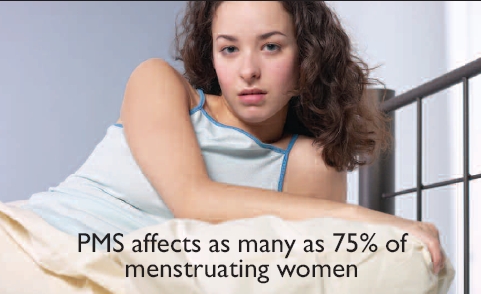 Lingonberry has recently been found to also be a powerful supplement for urinary tract health. According to Matt Phillips, president of Cyvex nutrition (which supplies Lingonol lingonberry extract), lingonberries have a high nutrient density and are rich in fiber, minerals, antioxidants such as vitamins C, A and E and polyphenols like flavonols, phenolic acids, stilbenes, anthocyanins and proanthocyanidins.
Lingonberry has recently been found to also be a powerful supplement for urinary tract health. According to Matt Phillips, president of Cyvex nutrition (which supplies Lingonol lingonberry extract), lingonberries have a high nutrient density and are rich in fiber, minerals, antioxidants such as vitamins C, A and E and polyphenols like flavonols, phenolic acids, stilbenes, anthocyanins and proanthocyanidins.
The effects of the lingonberry have been studied for their ability to prevent UTIs. Specifically, he points out, the shortchain proanthocyanidins in the lingonberry have been discovered to have a protective effect similar to the cranberry; its proanthocyanidins A-type are the active molecules recognized to support against UTIs through their anti-bacterial adhesion. The polyphenol content of his company’s branded lingonberry extract is about the same as cranberry extracts, at the same time providing more hydroxybenzoic acid and short-chain proanthocyanidins than cranberry. “Lingonol was found to have more than 4.5 times more proanthocyanidins than cranberry, making it a highly effective ingredient to help women battle UTIs,” he says.
Another potential beneficial ingredient for urogenital health (and menopause support) is Brazilian red bee propolis, which Jose Luiz "J.L." Paes-Leme, founder and CEO of Sunrise, FL-based NaturaNectar LLC, calls "one of the most promising ingredients in this area. "
Red bee propolis, he states, contains isooflavones such as biochanin A, formononetin among others, which are said to relieve discomfort caused by night sweats, hot flashes and irritability. Using high concentrations of certain Brazilian red bee propolis isoflavonoids, he believes, offers antimicrobial benefits, which benefit women's urogenital health.
Also important is soy, which is a source of naturally occurring aglycone isoflavones. According to Paes-Leme, "Aglycone isoflavones are scientifically studied to be more efficiently absorbed by the women's cell receptors (the same ones that absorb estrogen), therefore producing better relief for menopausal symptoms."
"Our research team in partnership with scientists from University of São Paulo (USP) in Brazil are working diligently to unveil these discoveries and make them available through our high quality products for the benefit of our women," states Paes-Leme.
Summary
Overall, explains Sheets, when catering to women both the mission of the store and its products contribute to women’s health. “Promoting what you stand for as a natural products retailer— good lifestyle habits, healthy/better diet, cleaner bodycare and home cleaning products, education/information—will create loyal shoppers,” she states, adding, “We are big believers in partnering with outside experts, such as stress management/ yoga, naturopaths and fitness centers. Additionally, sponsoring in-store seminars about various aspects of women’s health and cooking classes will also draw many potential new customers, as women frequently bring friends and family with them.”
In short, your store is indeed a “woman’s world” of opportunity for a life of vibrant well-being and good health! WF
References
The references will be included in the online version of this article at www.wholefoodsmagazine.com
Lisa Schofield is a freelance writer based in Freehold, NJ.
Published in WholeFoods Magazine, October 2010


